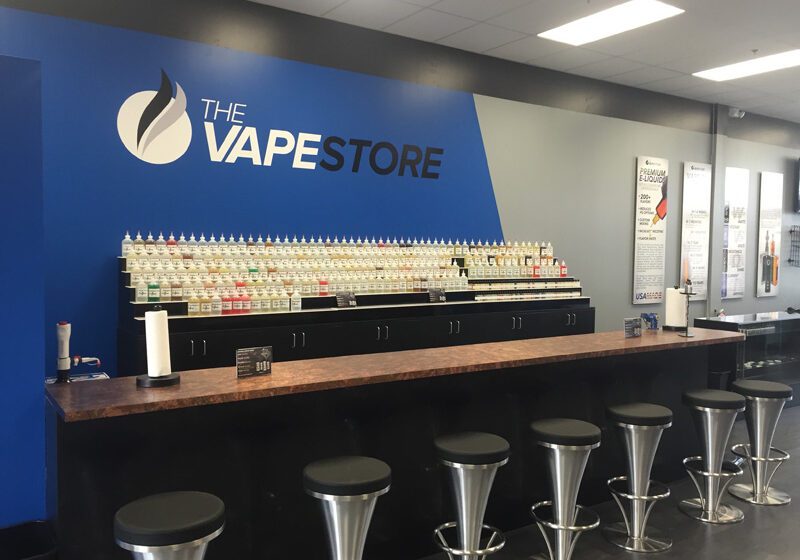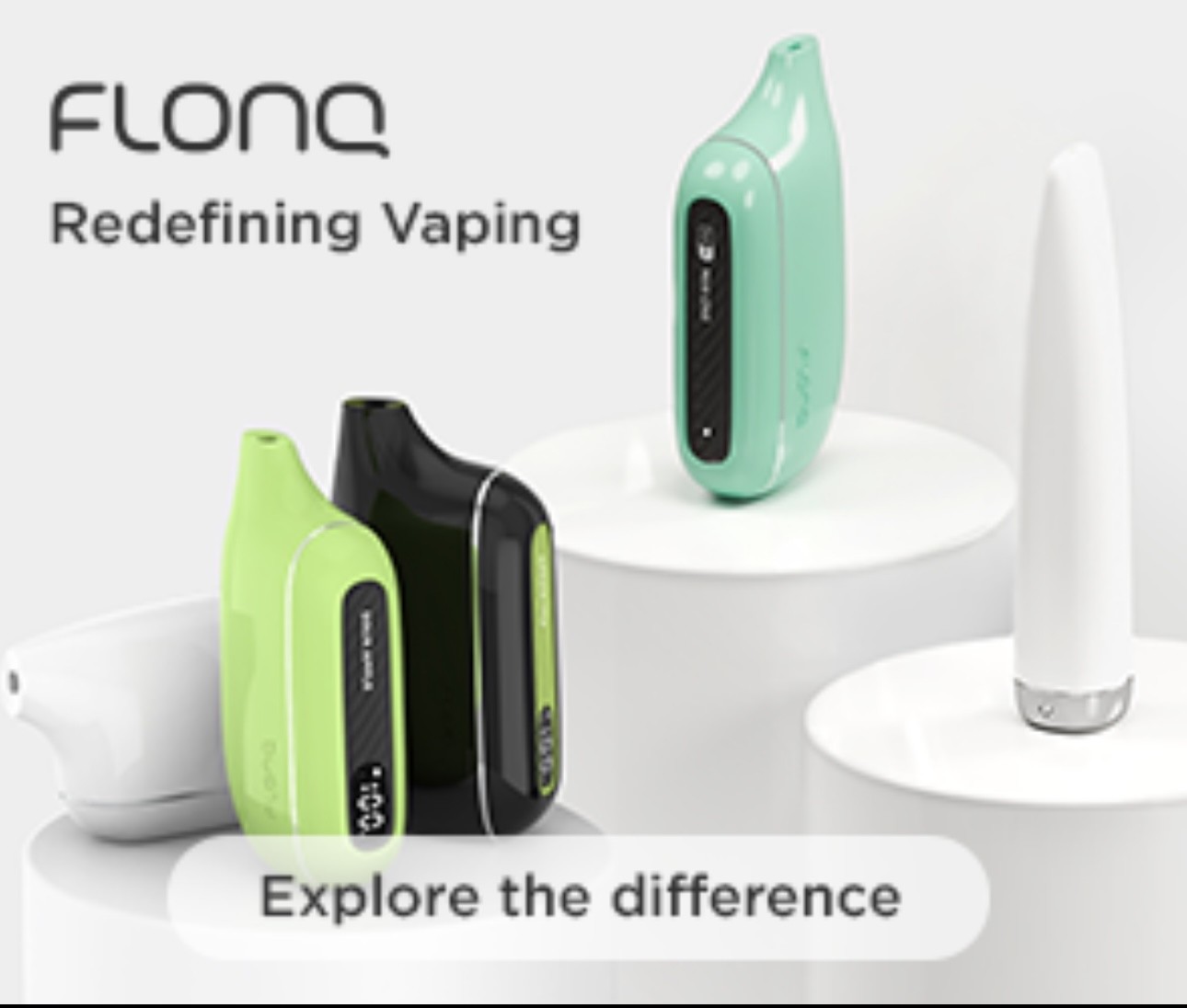Up close and personal

For Vapor Corp., distribution is key in an ever more competitive market.
By Stefanie Rossel
It’s a success story that we have almost gotten used to: The vapor industry continues to show growth rates that other sectors can only dream of. In the United States, value sales of e-cigarettes have been doubling each year, from $20 million in 2008 to around $1.5 billion in 2014, according to Forbes, and they are anticipated to continue increasing at an annual rate of 20 percent in the future. Bonnie Herzog, managing director of beverages, tobacco and convenience store research at Wells Fargo Securities, expects the U.S. market for vaping devices to grow to $3.5 billion by the end of this year, up from $2.5 billion in 2014. She also forecasts that, by 2018, e-cigarette sales will hit $10 billion.
A poll carried out by Reuters/Ipsos in May and June 2015 found that about 10 percent of U.S. adults currently vape, which is almost four times the share estimated by the U.S. government in 2013 (2.6 percent). According to the poll, nearly 70 percent of new vapers started in the past year alone. By comparison, smoking prevalence among U.S. adults currently stands around 19 percent, according to Reuters. Sales of traditional cigarettes in the U.S. have been declining over the past few years, and, as Euromonitor reports, cigarette value sales growth has slowed considerably, with value sales even declining in 2013, for the first time in more than a decade.
Little wonder then that the leading tobacco companies, after some initial hesitation, embraced the vapor sector to help make up for lost profits in their conventional business. From 2012, they began entering into the e-cigarette market. Today, the top four e-cigarette brands are owned by Big Tobacco manufacturers. According to Nielsen data* from May 2015, R.J. Reynolds Vapor Co.’s Vuse leads the U.S. market with a share of 35.7 percent, followed by Imperial Tobacco’s Blu (22.7 percent), Japan Tobacco’s Logic (13.8 percent) and Altria’s MarkTen (6.1 percent).
Of the many independent manufacturers that started the e-cigarette industry, only NJoy approaches the leading brands’ sales levels in U.S. mass-market retail, according to Nielsen. Anticipated federal regulation of the vapor business is expected to make business even more challenging for independent players.
Point of sale in the limelight
In this highly competitive environment, critical mass and clever strategies are keys to long-term success. Florida-based vaporizer and e-cigarette manufacturer Vapor Corp.—in its own words the only “pure-play” company in the vapor industry that is listed on a major stock exchange (NASDAQ]—is in the process of creating a national vapor product brand. To this end, the company has optimized distribution right down to the end consumer.
In July 2015, Vapor Corp. raised $41.4 million and embarked on an aggressive retail expansion strategy. “We presently have 15 company-owned stores and anticipate at least doubling that number before the end of the year,” says Jeff Holman, Vapor Corp.’s CEO. “By the end of 2016 we are looking forward to having 75 to 100 company-owned stores. Vapor Corp. is in the process of converting both its previously branded stores, as well as new store acquisitions, into a nationally branded ‘VaporMax’ trademarked retail program. This will allow us to create a comfortable and familiar vaping experience for both novice and experienced customers, no matter which store they visit across the U.S.”
The number of vape stores in the U.S. has risen to at least 15,000, with some estimates being as high as 35,000 stores, according to Wells Fargo Securities’ Herzog. Holman says that $2 billion of the $3.5 billion market is spent on vaporizers and that $1.2 billion of that $2 billion is spent in vape stores.
At Vapor Corp.’s stores, particular emphasis is put on the customer experience. Holman explains: “Our vape stores are more than just places to purchase products; they’re places for vapers to relax, interact and enjoy a quality vaping experience. We offer free Wi-Fi, sell coffee and other beverages, as well as light snacks in some locations. Eventually, we are looking to be the Starbucks of the vape store industry. We also obtained our first beer and wine license and are now hosting our customers for the watching of sporting events, as well as other social gatherings.”
In its stores, the company offers proprietary e-liquid brands, including its The Vape Store line (more than 200 flavors) and its new premium Naked Fish line. In addition, the stores sell accessories such as batteries, tanks and mods, and rechargeable vaporizer kits, all of which can be used with e-liquid solutions, wax, dry herbs or leaf.
With its comprehensive portfolio, the company seeks to cater to the needs of users in a market characterized by change. In September 2014, MarketWatch.com reported that open-system vaporizers had officially overtaken cigalikes, contributing $1.5 billion—$0.5 billion more than cigalikes—to the overall vapor sector in 2014.
Vapor Corp. is developing new flavor profiles that are distinct to its brands, enabling users to develop preferences for a certain product based on taste and flavor, like smokers do with their favorite brands of combustible cigarettes. To allow users of competing e-cigarette products to try and transition to Vapor Corp.’s cartridges, the company offers a universal-fit mouthpiece that can be used in conjunction with the battery section of most other popular e-cigarette brands.
The company also has a patent pending for a dynamo-powered e-cigarette that can be recharged by shaking the product, thus enabling continued use without having to plug the device into an electrical outlet. Vapor Corp. also has a patent pending for a biometric fingerprint locking system, which would allow only the adult owner to power up the device. This innovation is meant to prevent children from secretly using their parents’ vaporizers.
Going new ways
Just as important as innovation, however, is building brand awareness and getting the product to the consumer. When entering the vape market and taking their brands national, the traditional tobacco companies could draw not only on their considerable financial resources but also on their long-standing experience in distribution and marketing in a heavily regulated product category. As a result, each of the leading four e-cigarette brands is currently available in around 100,000 retail outlets nationwide.
Vapor Corp.’s approach is different, according Holman. “To begin with, the traditional tobacco companies have not entered into the vape-store segment of the industry, which is where we are targeting our major expansion,” he says. “Ownership of retail stores has never been their model, and in our pursuit to become the biggest player in this segment, we have in a sense decided to take our proverbial ball and ‘go play where the big boys ain’t.’ This essentially gives Vapor Corp. several advantages. As compared to our competition, we have superior buying power that comes not only from our 15 stores but also from our wholesale business, which still services over 30,000 retail locations, as well as our online efforts.”
What’s more, says Holman, following the company’s $41.4 million capital injection, Vapor Corp. likely has the biggest war chest in this industry segment from which to grow its store brand. The firm has also set itself apart by connecting at the local level. “We have begun to create a major presence in Florida and will continue to grow throughout the state and into the rest of the U.S. By establishing relationships with key local constituents, we now have an understanding about how to break into existing vaping communities that already include our key demographics.”
To take distribution of its products even further, Vapor Corp. intends to set up a franchise system. “In the coming weeks Vapor Corp. will announce a plan for a franchise program that will allow us to further expand our national vape store concept under the trademarked name ‘VaporMax’ with the tagline ‘The Original Vape Store,’ capitalizing on our existing 15-store footprint. Our strategy is to attract ambitious franchisees who share our vision and look to join forces with the leading retail vape store concept in the U.S. We will also seek to convert existing, successful vape store retailers by showing them how they can increase their profits by being a Vapor Corp. franchisee.”
As the company expands, it is taking into account the anticipated regulation of the vapor segment by the U.S. Food and Drug Administration (FDA). In the absence of federal regulations, many states have adopted their own e-cigarette regulations. Needless to say, the differences in regulation between jurisdictions make launching a new vapor product challenging.
Holman sees FDA regulation as an opportunity for Vapor Corp., which he says consistently adheres to FDA regulations and requires its business partners to do the same. “When the regulations are enacted, the e-liquid bar will be raised for all retailers in the FDA’s efforts to protect the public good,” says Holman. “Smaller stores that had been mixing their own blends in back rooms with cheaper ingredients will see their margins decline when they have to purchase higher-quality products, and will likely have to close. Before that occurs, we invite mom-and-pop stores across the country to engage with us as part of our national retail expansion strategy in light of the difficulties that they will face under the new FDA regulations.”
*Nielsen data focus primarily on convenience store sales; they do not include vaporizers or open-tank systems, which are typically purchased in vape shops or tobacco outlet stores.
